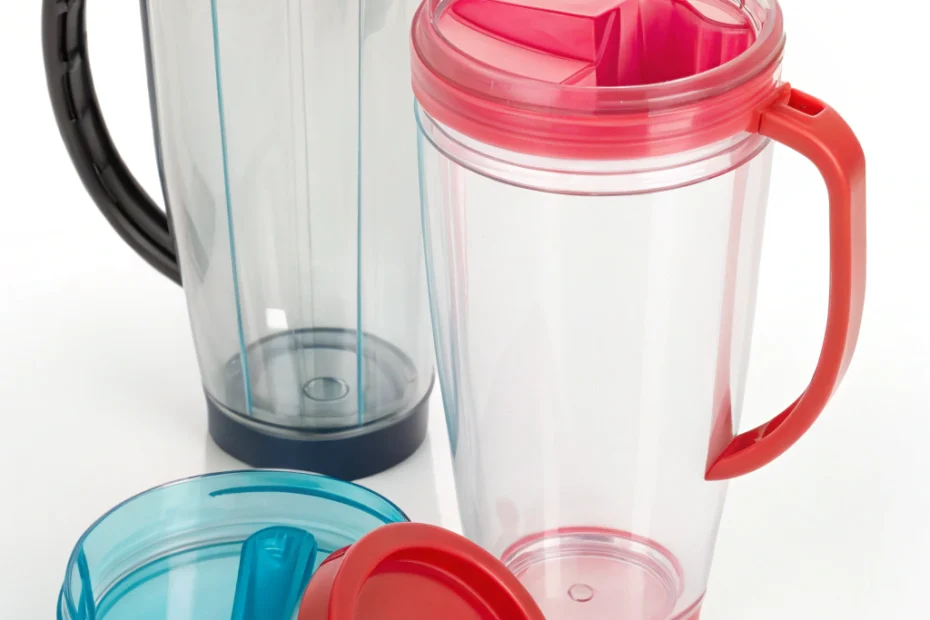At-a-Glance
Shop Chic Tumblers — Find Your Perfect Drinkware
Browse highly-rated tumblers and modern drinkware that match this post.
🔥 View best sellersAs an Amazon Associate, we earn from qualifying purchases.
Reusable plastic tumblers serve as a versatile and eco-friendly drinkware option, suitable for everyday use. These tumblers can help reduce waste while offering convenience and durability. Understanding their features and care requirements will enhance your experience with them.
How to Choose
Selecting the right reusable plastic tumbler depends on several factors. Consider the following:
- Capacity: Determine the volume of liquid you typically consume. Tumblers range from 12 to 32 ounces.
- Insulation: Insulated tumblers can retain temperature, making them ideal for hot or cold beverages.
- Design: Look for designs that suit your lifestyle, such as those with secure lids or built-in straws.
- Material: Ensure the plastic is BPA-free for safe consumption.
- Portability: Check if the tumbler fits in your car cup holder or bag for easy transport.
Safety & Setup
Safety is crucial when using reusable plastic tumblers. Here are some tips:
- Follow Manufacturer Instructions: Always adhere to the guidelines provided by the manufacturer regarding temperature limits and dishwasher safety.
- Check for BPA-free Labels: Ensure your tumbler is made from BPA-free plastic to avoid potential health risks.
- Use for Appropriate Liquids: While most are suitable for both hot and cold drinks, confirm with the manufacturer.
- Secure Lids Properly: To prevent spills, make sure lids are tightly secured before use.
Core Pillars
Reusable plastic tumblers are built on several core pillars that enhance their usability and appeal:
- Durability: Made to withstand regular use, reducing the need for frequent replacements.
- Eco-friendliness: Helps in reducing single-use plastic waste, promoting sustainability.
- Convenience: Easy to carry, clean, and store, making them suitable for various lifestyles.
- Affordability: Generally more cost-effective compared to metal or glass alternatives.
Care & Maintenance
Proper care extends the life of your reusable plastic tumblers:
- Regular Cleaning: Wash thoroughly after each use, either by hand or in the dishwasher if safe.
- Avoid Harsh Chemicals: Use mild detergents to prevent plastic degradation.
- Storage: Store with lids off to prevent odors and allow airflow.
- Check for Wear: Inspect regularly for cracks or discoloration and replace if necessary.
Comparison with Alternatives
Reusable plastic tumblers stand out when compared to other materials:
- Plastic vs. Metal: Plastic is lighter and often more affordable, while metal offers superior insulation.
- Plastic vs. Glass: Glass provides purity in taste but is heavier and more prone to breakage.
- Plastic vs. Ceramic: Ceramic offers aesthetic appeal and insulation, but plastic is more portable.
FAQs
- What are reusable plastic tumblers?
They are durable, portable drinkware made from plastic, designed for multiple uses and often used for both hot and cold beverages.
- Who should use these tumblers?
Ideal for anyone looking to reduce waste and seeking a convenient, durable option for daily hydration.
- How do I choose the right tumbler?
Consider factors like capacity, insulation, design, material safety, and portability.
- How can I maintain my tumbler?
Regular cleaning, avoiding harsh chemicals, and proper storage are key to longevity.
- Are they safe for kids?
Yes, but ensure the tumbler is BPA-free and follow manufacturer guidelines for safe use.
What to Do Next
Now that you’re familiar with reusable plastic tumblers, consider evaluating your needs and preferences to find the best option. Keep in mind the safety and care tips to make the most out of your tumbler experience. Remember, the goal is to enhance your hydration habits while contributing positively to the environment.
Disclaimer: Information is for general guidance on drinkware only. Always follow the manufacturer’s instructions and safety warnings.
Shop Chic Tumblers — Find Your Perfect Drinkware
Browse highly-rated tumblers and modern drinkware that match this post.
🔥 View best sellersAs an Amazon Associate, we earn from qualifying purchases.
